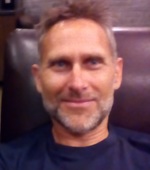|
Much of West Africa was historically lush, tropical forest. Population growth and poverty have come together to bring about a transformation. The place is largely deforested today and Nigeria, in my experience, exhibits environmental degradation at its worst. Lagos, the commercial capital of Nigeria, a rapidly growing megalopolis of 16 million with only sporadically functioning (or totally absent) electricity, water or sewage systems, condenses the worst of Africa (but some nice surprises, as well) into its slightly under 1000 sq. km. I arrived at Lagos' steamy international airport late at night and jostled with the mob at the luggage belt to extract my bags. I was covered in sweat and eager to get to my hotel and a cool shower, but the hotel pick-up I'd arranged in advance was not there. Thank goodness I had asked my friend Collins to come as a backup. In the unlit darkness in front of the airport we met and then rather frantically started negotiating a taxi ride, pushing around a luggage cart in a parking lot lit only by passing car headlights. In the madness, my green nose noticed something: it was moist tropical air with no smell of vegetation. The scents I detected were those of exhaust fumes and charcoal fires. The next morning I had my first walk in Ikeja, the neighborhood of Lagos in which I based myself. Even in the morning, the sun was unremittingly strong and a person with a bit of common sense would have stayed indoors. But when in Rome... So I decided to do as the Nigerians do and just get out there and do it. It's not that they like the heat and sun, but they have no choice but to get out there and make a living. In all my travel experiences I have to say it's hard to recall a situation as uncomfortable. The almost completel lack of trees meant few reprieves from the blistering sun, which penetrated the asphalt and dirt and then radiated out to cause an intense heat island effect. Bushes and trees being absent, there was nothing in place to filter the dust and black exhaust billowing from the back of most cars and trucks. For a guy who tends to love every place he goes, Lagos was a forlorn exception. If first impressions were any indication, this would not be a particularly pleasant 3 weeks. I was very lucky to have a number of friends in Lagos (and Nigeria, in general), who made my stay here a wonderful experience. It might be wise for me to make clear that this blog posting is meant to give my views of the natural environment of Lagos and is in no way a broad condemnation of this fascinating and vibrant city. But on the environmental front, Lagos is quite a spectacle. The harbor of the city was clearly at one time surrounded by vast wetlands, presumably filled with wildlife. The city has grown over much of the shoreline - including slums that extend out into the water on stilts - and immense shoals of garbage fill areas of the water front, as you see under the bridge in the picture above. But even amid the garbage, where there is water and a little space to grow, shoots of green emerge. You can see some of this at the back of the same picture. In the wealthiest parts of the city, such as Victoria Island, which I am approaching on the back of a 'okada' or motorcycle taxi above, there are some trees and greenery. The climate is really perfect for fostering lush vegetation but poor planning and competition for limited space has done away with most of it. There are signs of hope, however. Along the major highways, and in the areas between interchanges, makeshift huts have been cleared and grass and trees have been planted. The current state governor, Babatunde Fashola, is given much credit by Lagosians I met with making positive changes...including the revolutionary bus system that was introduced in the last couple of years. Most of Lagos' transport is in private hands, comprising a very comprehensive network of small buses (really vans) and motorcyles. But these forms of transport are often expensive, uncomfortable and dangerous. It cost considerably more to take the cheapest form of public transport from where I was staying to the "downtown" than it would to cover a similar distance in New York or Tokyo. People in Lagos spend a huge part of the incomes getting to and from work. But the new bus system, which has dedicated lanes along several main roads and highways, is fast, clean, safe and reasonably priced. It doesn't have enough routes yet to get everywhere in the city, but i found it to be a very comfortable way to get around. There are even special (more expensive) buses with air-conditioning. It's encouraging to see some things changing for the better in Lagos, and the long-suffering Nigerians somehow maintain their optimism. I can imagine a city with streets lined with beautiful trees, a canopy of green sheltering the pedestrians from the burning sun, and parks in the vacant land between urban settlements. This city of elegant and intelligent people deserves a lush, tropically green environment, like you might find in Honolulu or Singapore. Nature is resilient and I believe Lagos will get there in a decade or two.
2 Comments
With a spring-like climate year round, and a setting of rare natural beauty, Santa Cruz de Tenerife was a unexpectedly pleasant discovery for me. I came to visit my friend Hiromi Hayashi, a Japanese food journalist who I co-wrote a book with in 1991. She lives in Santa Cruz de Tenerife half the year - just off the pedestrian street you see above. In no way did I expect to find the lavish attention on greenery in city planning. Not only are most streets lined with trees, bushes and flowers, but even some buildings spill green off their sides, as you see below. In the crowded center, with its narrow streets, a transformation has come about...there are trees, quality paving stones, planters everywhere, and benches for people to enjoy their beautiful city. My impression is that much of the beautification and greening has occurred in the last decade or so. This is Spain at its best.
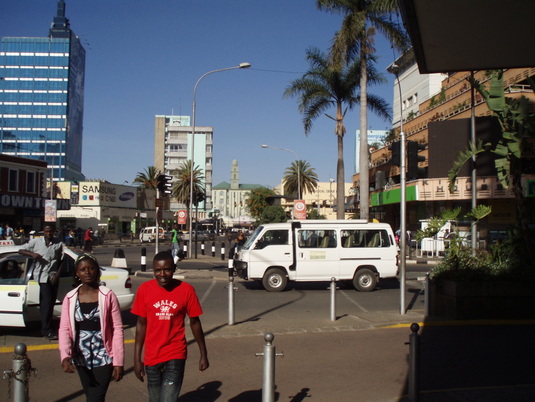 Downtown Nairobi Downtown Nairobi This is an old posting, unrelated to my CitiNature work, that I transferred from another blog I once started. It's a humorous look at a trip I'd taken around Kenya with a very friendly, but young and inexperienced, local guy. ==== One afternoon in downtown Nairobi while getting my dusty shoes shined, I started talking with Gathaku Bernard Gachuiri (Ben, pictured below) who was standing at an adjacent SIM card sales booth. He somehow reminded me very much of my good friend Cleo in New York and being, as he revealed to me, 'an exceptional entreprenuer and skillful networker,' he eagerly took to the idea of befriending me. Ben effuses a nervous energy, animatedly gesticulating and bursting with ideas and stories in his rapid-fire Kenyan English. 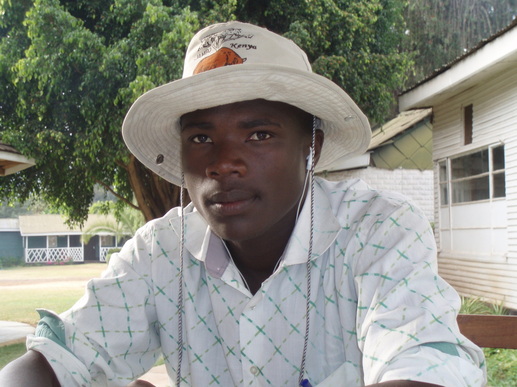 My good buddy, Ben. My good buddy, Ben. I finished the shoe-shine, and Ben and I decided to go have a coffee at Java House (a Starbucks-like Kenyan chain which I would never have imagined to find in Africa) on Mama Ngina Street. Learning of my plans to travel around the country a bit, Ben offered his expertise as a tour guide at a reasonable rate and we made a plan to circle around Mt. Kenya (the second highest mountain in Africa, just south of the equator) and then return to Nairobi via the Rift Valley. Ben assured me of his knowledge and expertise, I felt he was a good guy, and I also believed it would be advantageous to go with a local. So with very little planning, the next morning we got on a matatu (a small van crammed full of seats) bound for Nyeri in Kikuyu country in the Kenyan highlands (Ben’s tribe is Kikuyu). 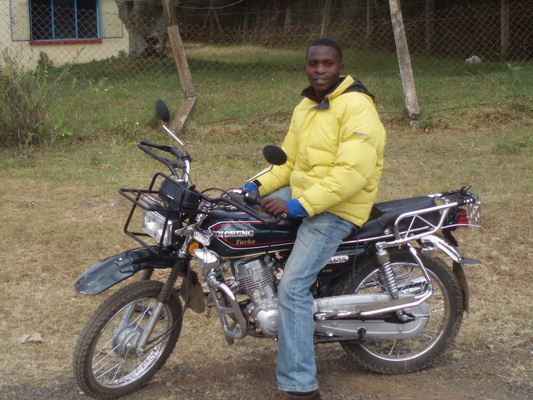 One of our motorcycle taxi drivers. One of our motorcycle taxi drivers. I have yet to explain why I call this posting “Mt. Kenya by Donkey.” Although Ben gave me good company and entertainment on the trip, he also brought exasperation. Ben proudly positioned himself as the “local” well acquainted with the towns and countryside we visited. This knowledge, quite naturally, put him in his preferred leadership position. The moment we would alight from a matatu (or sometimes a motorcycle taxi), Ben would march off determinedly expecting me to follow, not disclosing the destination – which I soon realized he himself had no idea of. I would ask him, ‘Where are we going?’, and his brow would crumple and he would very earnestly say, ‘Trust me.’ My own instincts, it soon became clear, were a much better guide to getting around, and Ben was relegated to a support role. As he had begun calling me a crazy “Mzungu” (white man), and as his only utility at this point was in carrying my backpack, I gave him the nickname “Donkey.” He seemed to like this level of familiarity. 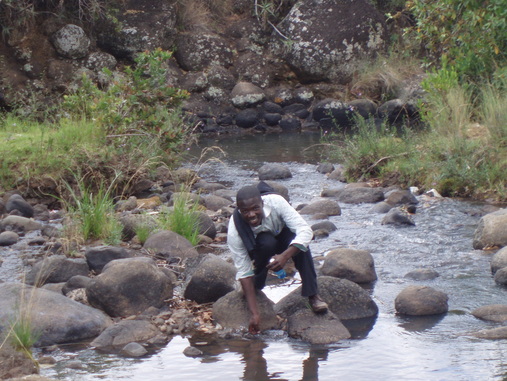 My phone goes into the water... My phone goes into the water... Ben coveted my camera and mobile phone, the trappings of any successful entrepreneur. Carrying them, just for show, even in the middle of the bush, gave him satisfaction. I was a bit worried about him getting too attached, but his temporary possession ended when on a walk through the countryside outside Nyeri he dropped my mobile phone into a stream. He wasn’t making a call. It just slipped out of his pocket. There was nothing to get angry or upset about. I just laughed at the ridiculousness of it all. 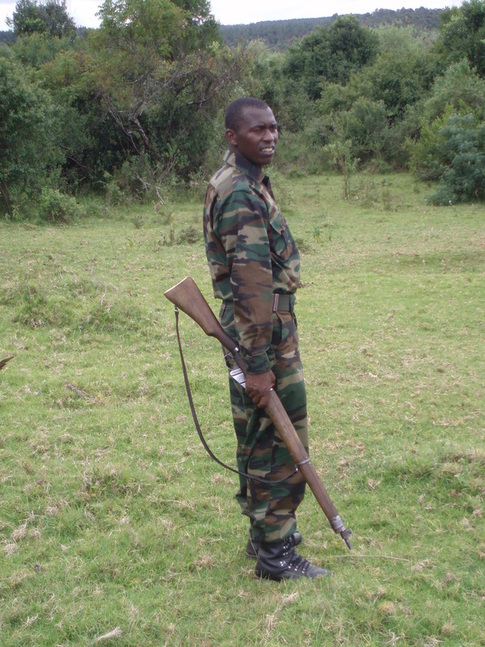 Our bush guide. Our bush guide. On our second day in Nyeri, we arranged for a bush trek in the Mt. Kenya National Reserve. We hired a bush guide (required), who had a vintage WWII British army rifle to protect us from any unwanted encounters with animals. Although this particular trek was not extremely rewarding in terms of wildlife, we did see a few animals, including cape buffalo, one of the “big five” game animals and among the most dangerous. In the presence of danger, the leaders of these animals defiantly stand facing the “enemy”, in a kind of stare down, nostrils in the air. Our guide pointed his rifle at the buffalo, in case they charged, and I took a couple of pictures. Ben, for his part, picked up a large stick, pointed it at the animals, and made shaking movements like he was shooting. The largest bull, closest to us, in reaction to Ben’s provocation kicked its huge hind legs into the air (apparently well acquainted with guns), and thankfully retreated into the bush instead of charging, which would not have been unexpected. Ben, unchastened by the near-death experience he’d brought upon us, continued to admire the forbidden fruit of the guide’s rifle. After some time had passed, his pleading paid off, and the guide agreed to let Ben hold the fire arm. He grasped the rifle, and before he could be stopped, pointed it at my head (and at the second trekking guide), pretending to fire. 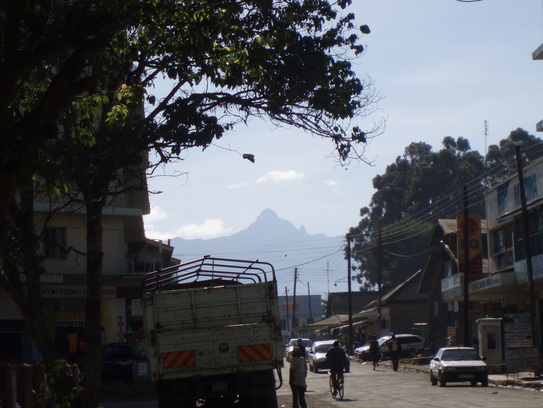 View of Mt. Kenya from a street in Nanyuki. View of Mt. Kenya from a street in Nanyuki. After our trek, we returned to Nyeri for the matatu to Nanyuki, another high country town near Mt. Kenya. The views from our hotel roof to Mt. Kenya were marvelous, and here Ben washed his and my clothes (very nice of him), and hung them to dry in a very Kenyan way, it seems: without using clothes pins, the socks and underwear are kind of knotted over the line so that they don’t fall off in the wind. 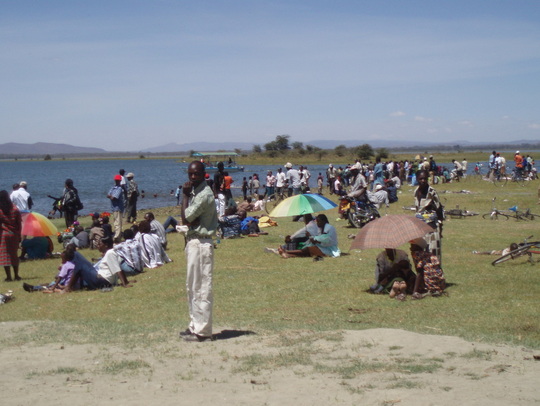 A day at the beach along Lake Naivasha A day at the beach along Lake Naivasha We left the high country and came down toward the rift valley, stopping at Nakuru for the night. Nakuru is the scene of the horrible tanker truck accident in February where hundreds of people were terribly burned when they tried to scoop up spilled gasoline and the gasoline ignited. It’s a bit of an unruly town, and we left early the next morning for Lake Naivasha, famous for its hippos. The hippos are hard to see during the day because, for the most part, just the tops of their eyes, noses and ears pop above the water. 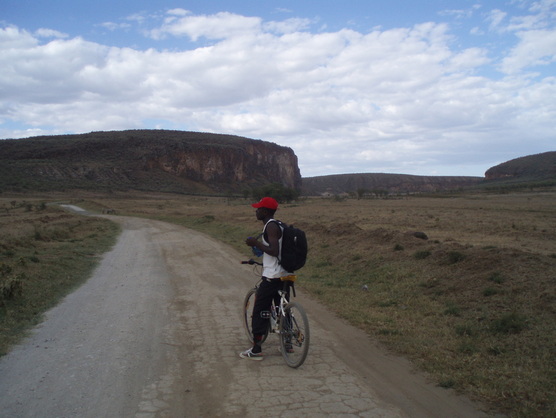 Ben on one of our mountain bikes in Hell's Gate National Park Ben on one of our mountain bikes in Hell's Gate National Park Not far from Lake Naivasha lies Hell’s Gate National Park. We hitched a ride on a motorcycle and at the entrance to the park (with a rather foreboding sign warning about the dangers) we found that we could rent mountain bikes. These bikes were in a rather sad state of repair, and the wrong size, but we managed to ride for the nearly 20 kilometers into the center of the canyon.  Me and some zebras Me and some zebras The wildlife here was incredibly numerous and diverse, and we were VERY close to it all: giraffes, zebras, warthogs, gazelles, large buzzards, and other animals I’d only seen on tv before. Being in the park on bicycle or on foot put us very close to the animals and didn’t frighten them away as cars or trucks would. Hell’s Gate has no lions or cape buffalo, so it’s reasonably safe to be riding on the main gravel road. 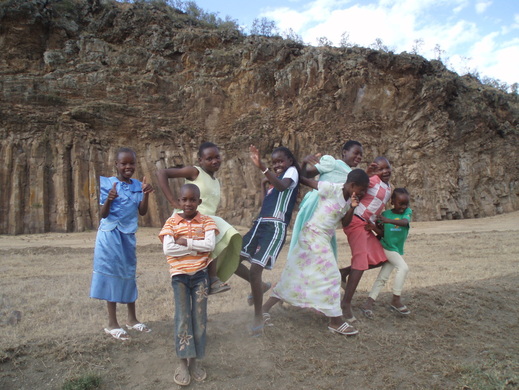 Some cute kids happily playing on a road in the National Park Some cute kids happily playing on a road in the National Park On the last night of our trip, we arrived at my Nairobi hotel rather late, and Ben asked if he could spend the night (I had a large room with an extra bed). I was very ready for a good night’s sleep, as we’d really had a gruelling (if exhilirating) trip, so I told Ben he could stay, as long as he didn’t wake me early in the morning. He’d had a habit during our trip of pounding on my hotel room door the moment he woke up in the morning, often very early. In any case, I made my wishes clear, and Ben solemnly agreed to let me sleep. However, at around 730 in the morning, I found myself surrounded in bed by cleaning staff of the hotel. Ben had seen them outside the room and told them they could come in and clean around me, but just not to wake me in my bed. It was a perfect ending to the voyage with Ben. Ben is now working part time in Nairobi, and looking for his big break – which no doubt he will find. The quote he puts under his profile on Facebook is: “A successful person is one who can lay a firm foundation with the bricks that others throw at him or her.” |
about the authorCategories
All
Archives
October 2017
After nearly two decades of corporate duty, I decided to follow my heart and do what I love: make cities greener and healthier places. Over the coming years I will be traveling to cities all over the world, reporting on what I see and learning about how even resource-poor places can improve urban lives through urban greening and greener lifestyles. I've started the CitiNature project to channel my energies and drive initiatives supporting equal access to green amenities for everyone.
|
| a better urban life |
|
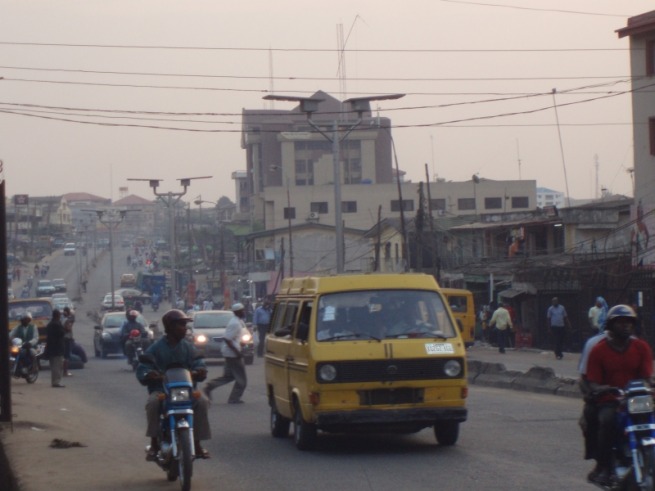
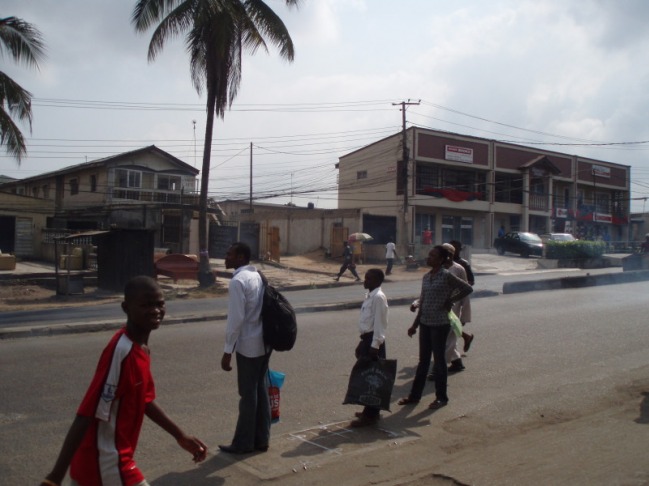
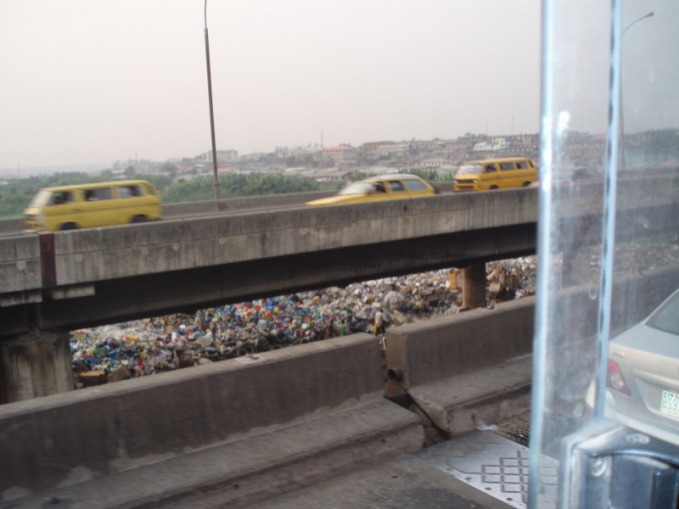
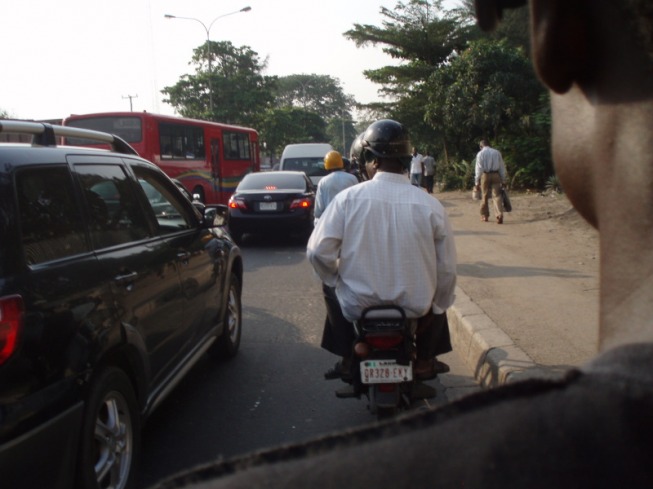

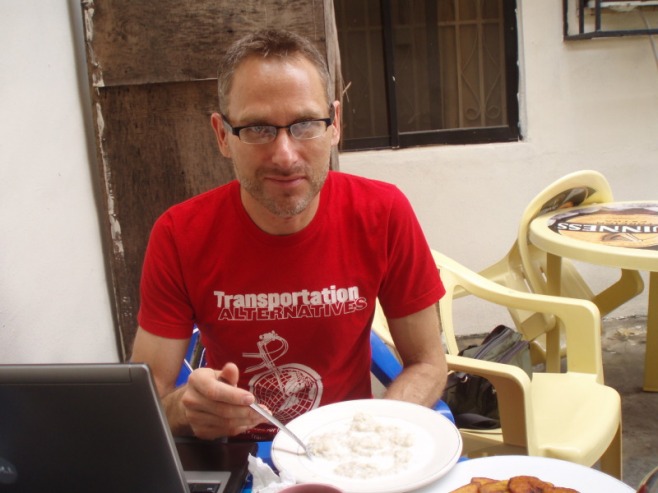
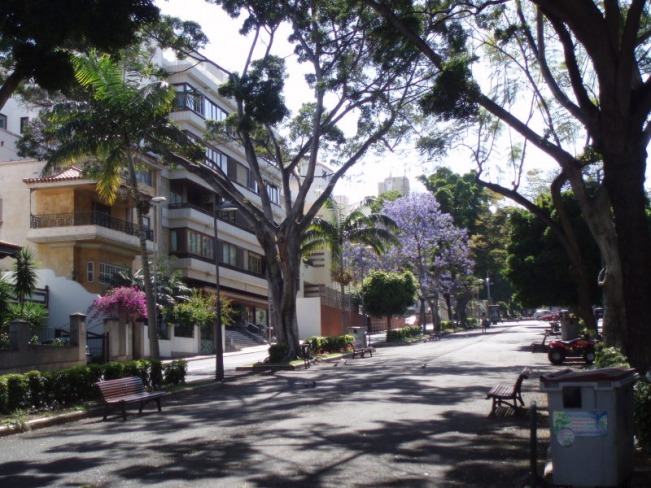
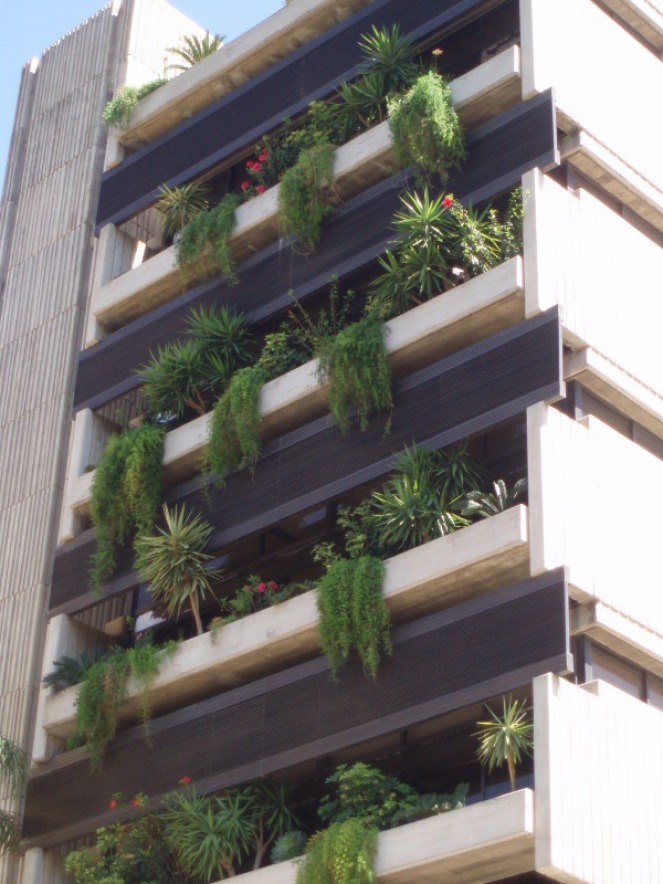
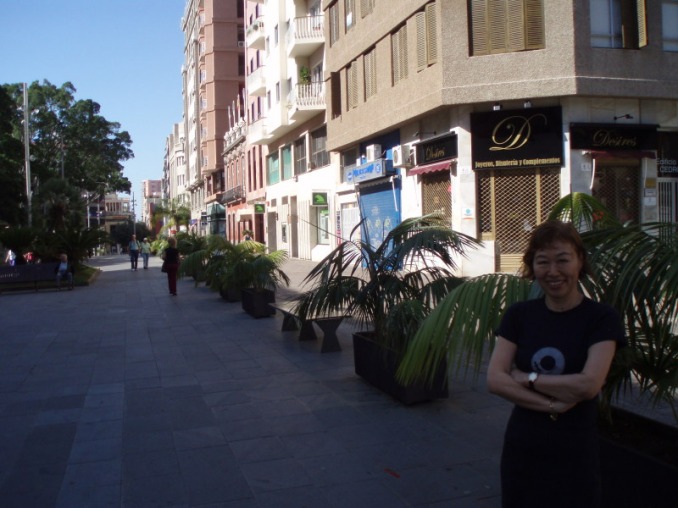

 RSS Feed
RSS Feed
